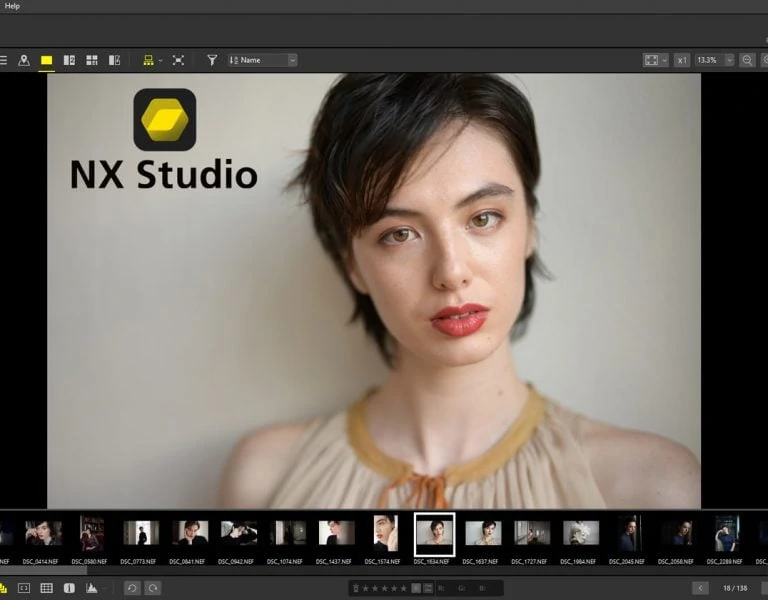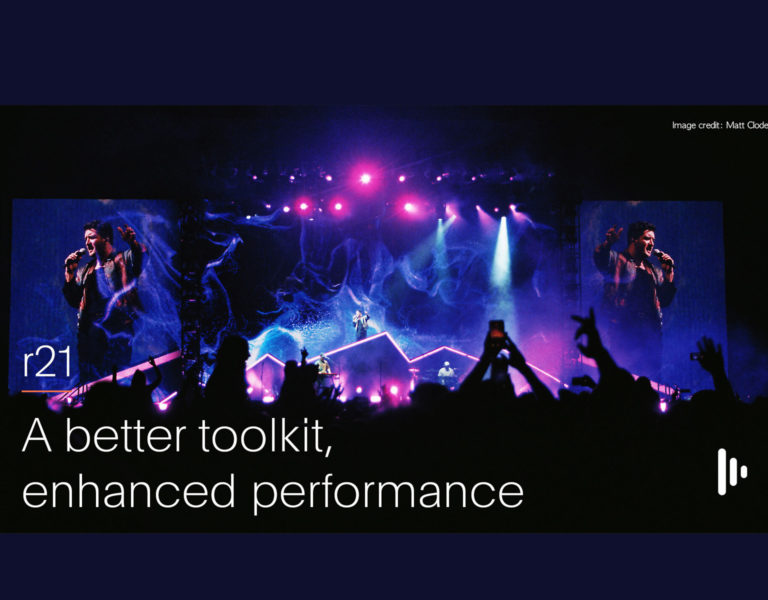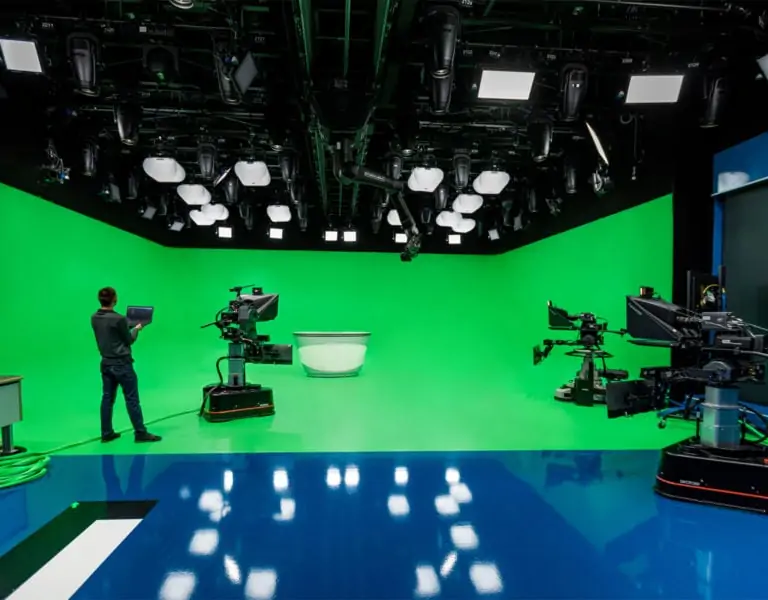Get with the programme
Be it through image editing, 3D models, or just written notes, software is a crucial tool with which cinematographers communicate their creative intentions.
“Software has become a completely vital part of my prep and shoot today,” says Adam Suschitzky BSC. For him this begins with Scriptation, the Emmy Award-winning app for paperless production.
“I treat my script breakdown routine a bit like an archaeological survey,” Suschitzky explains. After an initial read, putting himself in the shoes of a viewer, he begins a deep dive into how he can translate the ideas to the screen. “I search between the lines for what I feel the writer intends and sometimes has not fully rendered visually. I look for all ways I can visually enhance the script, but also, I’m breaking down anything practical I can foresee will be necessary to plan out.”
Using Scriptation’s highlighter, pen and underscore tools, and a variety of colours “so nothing is forgotten”, Suschitzky marks up anything that needs special equipment or discussion with other HoDs, as well as noting his creative intentions. “By the time my prep is complete I feel I’ve got a solid plan that I can share with multiple departments to keep everyone informed and on the same page once it’s been budgeted.”
Several DPs have created software for their peers: Steve Yedlin ASC developed ChromaCalc, an app to measure and help correct colour differences between lighting fixtures; Matt Workman created Cine Tracer, a pre-visualisation tool in which a virtual set and actors can be built, then lit and framed with virtual lights and cameras; Lawrence Sher ASC is behind ShotDeck, a database of extensively tagged frame grabs from films for use in building a mood board.
“When ShotDeck came on the scene a few years ago I used it for the first time while locked in a hotel room for fourteen days’ quarantine in Bangkok!” says Suschitzky. He was prepping the Netflix mini-series Thai Cave Rescue and needed to present a visual deck to executives. “It was so helpful to be able to use ShotDeck to show frames of night interiors that could demonstrate my intention for lighting the cave sequences as everyone was rightly perplexed as to how they would look when there was in reality no light down there at all.”
Paolo Bischi, a London-based DP of commercials, music videos and shorts, also relies regularly on ShotDeck. After using the site to assemble his mood board, he brings this into Blackmagic Design’s DaVinci Resolve. “I collect the shots on a timeline and apply false colour OpenFX from timeinpixels. From there I analyse the contrast ratio for each shot and make notes – 2:1, 3:1, which colour is working for key/background and what makes it interesting, also how the contrast ratio is influencing the story and the character.”
Bischi then assembles a document containing screen grabs and notes on lighting, lenses, and camera movement. “On set I’ll bring the notes and apply the theory I prepared at home. But like for everything else it’s always a question of study, learn, try, try again, learn, study, etc., etc.”
Gavin Finney BSC is another DaVinci Resolve user. He recalls an occasion when Resolve’s colour tools came in very handy on a project he had shot which was being graded in LA. The colourist was receiving conflicting instructions and the producer was unhappy with the results. “So, they actually set up a fast link and sent me the files,” he says. Finney performed a quick grade in Resolve and sent it back to the team in LA, who were able to take the node tree he had set up and produced a much more refined version from there.
“That was the first taste of what has now become more and more popular, which is remote grading.” Both Resolve and competitor Baselight support remote workflows, while systems like Frame I/O enable media to be easily shared and reviewed over any distance.
“Now we’re using calibrated iPads,” Finney adds, explaining that sixth generation iPads have a reference mode which allows the accurate viewing of HDR material. “If you’ve got a Dolby file correctly encoded, it recognises it. Then other people can be invited to the grade as well. You could have showrunners in LA, I could be on location in Bristol and the colourist could be in London and we can all have a look at the same thing.” This has a big impact on the ability of a busy DP, often with overlapping shows, to remain creatively involved. “You can keep an eye on the grade or even participate in the grade and be anywhere in the world. For DPs that’s huge.”
Adobe Lightroom is another important tool for Finney, and he keeps a library of stills so he can demonstrate different looks on them. “Often I’ll take recce pictures as well in Lightroom,” he continues. “I’ve used it very quickly to show how a day-for-night picture can work, so taking a picture in daytime with cloud and then turning it virtually into a nighttime picture.” It takes less than a minute for Finney to do this in the Lightroom mobile app, and he can immediately show it to the director and producer, “so it’s a kind of reassurance.”
When working with art departments, Finney will often be passed a 3D set model which he can open in SketchUp from Trimble. “You cannot only move through it with a virtual camera, but you can take the roof off, you can take walls off,” he says. “That’s a really useful tool for lighting and for rigging and for seeing how a set will fit within a studio space.” He adds that the virtual camera can reveal how much of a translite or green screen will be needed outside windows. “So, it’s a very good way of visualising before you build anything.”
Gaffers are also finding software integral to their workflows. Cullum Ross feels it is particularly useful for collaborating with other departments in prep. “More often we’re doing virtual recces,” he explains, “mapping out a location from Google Earth in Unreal Engine. That allows us to check out the sun-path, albeit virtually, and to see if equipment will physically fit into a location. We can feed that information back to Locations and it really helps with what we’re going to see, what the frame might be.”
To prep a studio shoot, Ross employs the CAD package Spotlight from Vectorworks. “I use that for doing all my CAD plans for stage rigs because I’m theatre trained. If you do anything in theatre you’ve got to have a plan. You can’t just show up and hope for it to all happen. It’s all about communication and providing those details to the rigging crew.”
Laura Howie, a DP and lighting-camera operator specialising in stop-motion, used Photoshop for a similar purpose during prep on Pinocchio. “At the start of the pandemic we had some time working from home and I used this to work on some lighting plans,” she says. She brought technical plans of the sets into Photoshop and adapted stock images of lights and cameras to create her plans.
“I like to be flexible in my work, to work fast and to make changes quickly without affecting the aesthetics,” she continues, “and I find that by doing plans like this beforehand you have a good idea of how the sequence is holding together and what can change as well as what can’t.”
Howie explains that software is critical to filming stop-motion, “because you’ve got to have a way for the animator to see a live image and compare it to the last frame captured, as well as play their shot in real time to check the flow of their animation.” Howie and her colleagues use Dragonframe, from DZED Systems, which comprises multiple workspaces, including one for cinematography. “This area can be used to control all the camera settings, to take test frames, collect reference frames, check focus, check clipping, check levels and write notes,” she says.
Dragonframe can automate motion-control camera moves, as well as lighting via the software’s DMX workspace. “I love working in this space because I can individually control all my light levels but also quickly set up any lighting effects using keyframes,” says Howie, who used this feature extensively for firelight scenes in Pinocchio. “I could program in a flicker effect, shoot a quick video assist test to check how it was looking, and then, if it seemed close, I could shoot a higher resolution test to make sure. Everything is prepared and tested before the animator starts shooting and then when they do, Dragonframe automates everything for them.”
Better preparation seems to be the overarching benefit filmmakers get from software. As Adam Suschitzky notes, “I have found there’s now a much higher expectation to show my intentions than ever before, but I embrace this as an opportunity to bring everyone together from top to bottom of the production team by sharing my mood board, once approved, with as many people as possible.”


















